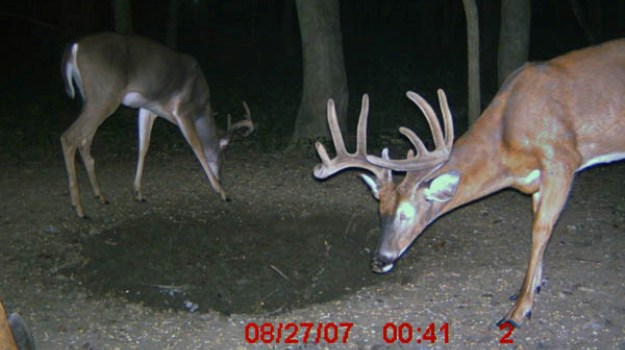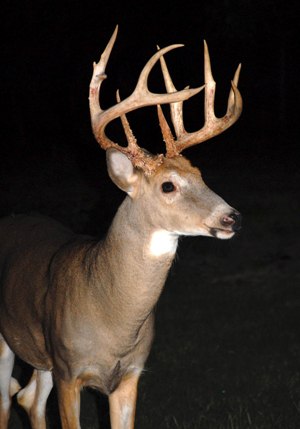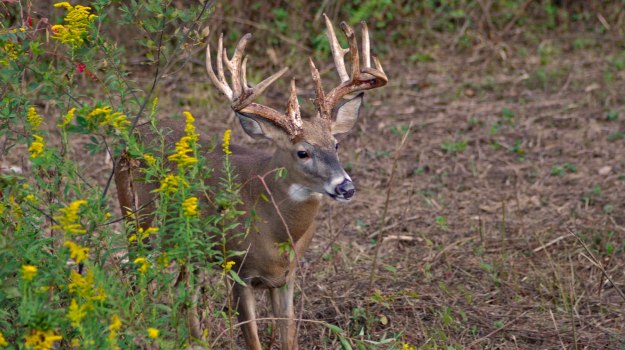
Editor’s Note: Dave Parrott of Louisville, Kentucky, one of Mossy Oak’s pros, decided he could build a better trail camera. Parrott got involved in building trail cameras when the switch was made from 35 millimeter cameras to digital cameras. Because digital cameras ran $500 or more when they first were produced, Parrott decided he could build a better and less-expensive trail camera, if he built it himself. He became fascinated with what trail cameras could do, and what he could learn about game movement with the trail cameras. This began his lifelong obsession with developing game cameras and learning more-efficient ways to use them.
I have a technology background and have worked on computers and phone systems. So, I understand the technology that’s required to build a trail camera. When I started studying digital trail cameras, I told myself that I should be able to build one and save myself some money. A company called Pix Controller would sell individuals the board and the lens that went over the PRI sensor, which was a passive infrared sensor for heat and motion. Then I bought a Pelican waterproof case, took a drill bit (paddle bit) and drilled out my holes in the Pelican case for the lens of the camera, the flash on a digital camera and the sensor. Next, I’d install my board and have to solder three wires to the board. The wires had to go inside the camera. So, I had to take the camera apart and find the trigger mechanism for that camera. Then I had to locate the ground for the camera, the power and the shutter wire inside the camera. What the pix board would do was send a signal up to the camera when something walked in front of the infrared sensor. That sensor would turn the camera on, wait 3 seconds and then hit the shutter and flash button to make the picture. Once I had all the wires connected, I could strap the Pelican case to the tree, and I had a digital trail camera with infrared and heat sensors for a cost of $125. So, I built trail cameras for myself and family and friends. Soon everyone I knew began asking me to build them a trail camera.
 I started using liquid nails and cut-up Mossy Oak Leafy Wear and glued it to the exterior of the pelican case that was holding my camera. By adding the Mossy Oak Leafy Wear to the exterior of my camera box, my camera was almost totally invisible to people and deer. The trail cameras I used were 4 megapixel Sony cameras, and we were getting some of the best trail-camera pictures anyone had seen. These trail cameras were producing the highest resolution of any-other camera on the market at that time. We got such good trail-camera pictures, because the technology that was being used in other trail cameras at that time were CMOS cameras with 3 to 4 megapixels. The sensors for the cameras being commercially built were Sea Moss cameras, but the Sony cameras we were using had a processing chip in them to make the cameras take better pictures. You could change the ISO, and the Sony cameras had image stabilization that the other cameras didn’t have. I probably built 200 or 300 trail cameras using these Sony 4 megapixel cameras.
I started using liquid nails and cut-up Mossy Oak Leafy Wear and glued it to the exterior of the pelican case that was holding my camera. By adding the Mossy Oak Leafy Wear to the exterior of my camera box, my camera was almost totally invisible to people and deer. The trail cameras I used were 4 megapixel Sony cameras, and we were getting some of the best trail-camera pictures anyone had seen. These trail cameras were producing the highest resolution of any-other camera on the market at that time. We got such good trail-camera pictures, because the technology that was being used in other trail cameras at that time were CMOS cameras with 3 to 4 megapixels. The sensors for the cameras being commercially built were Sea Moss cameras, but the Sony cameras we were using had a processing chip in them to make the cameras take better pictures. You could change the ISO, and the Sony cameras had image stabilization that the other cameras didn’t have. I probably built 200 or 300 trail cameras using these Sony 4 megapixel cameras.
I really considered jumping into the trail-camera business to try and make a living at it. But, I couldn’t get anyone to manufacture these cameras for me. I contacted Sony, and the company wouldn’t let me buy the cameras at wholesale prices. They said I could be a dealer and buy cameras just like other dealers did. About that time, Leaf River Trail Cameras contacted me and asked me to do some research and development for them. So I did, and they started sending me cameras to use. But, I still was building a few cameras for myself. Then DLC Covert trail cameras introduced cameras that cost $150 for their lower-end models. They took really-good pictures. But, battery life was the problem. I would have to go to my cameras every 3 days to put in new batteries. Then trail-camera manufacturers begin to build cameras with 4, 6 and 8 AA batteries that would take 4,000 to 5,000 pictures without having to be replaced. The camera I was using used 2 AA batteries, and I could get 300 pictures before I had to replace the batteries. So, I made the change and went to Covert Cameras, because they make good pictures and have a long battery life.
Dave Parrott Explains How to Bring Deer into Your Trail Cameras



























